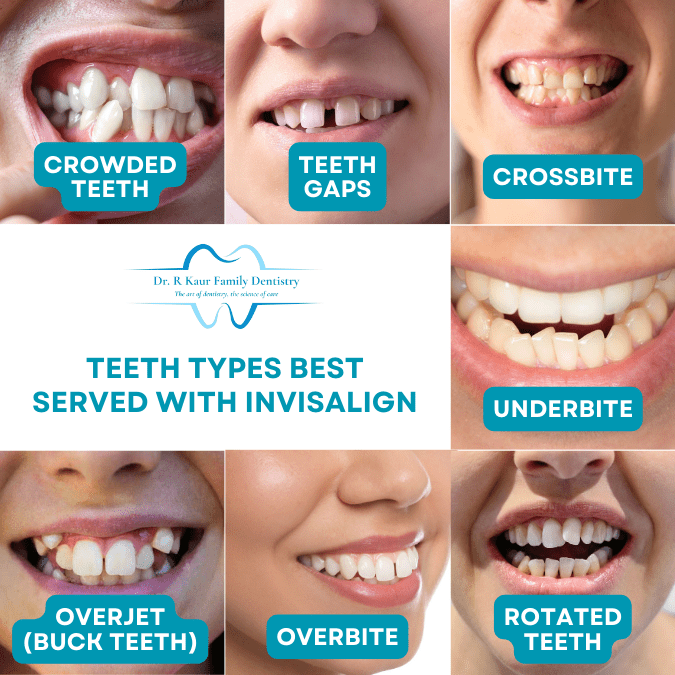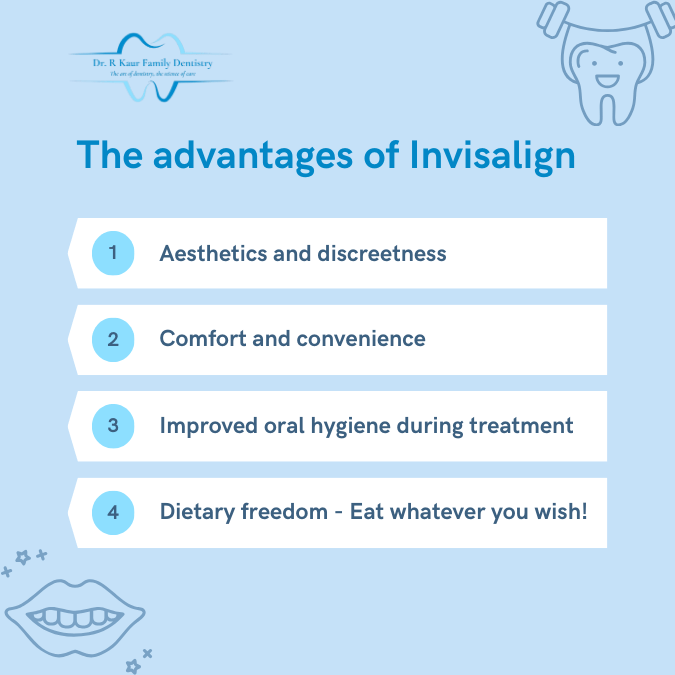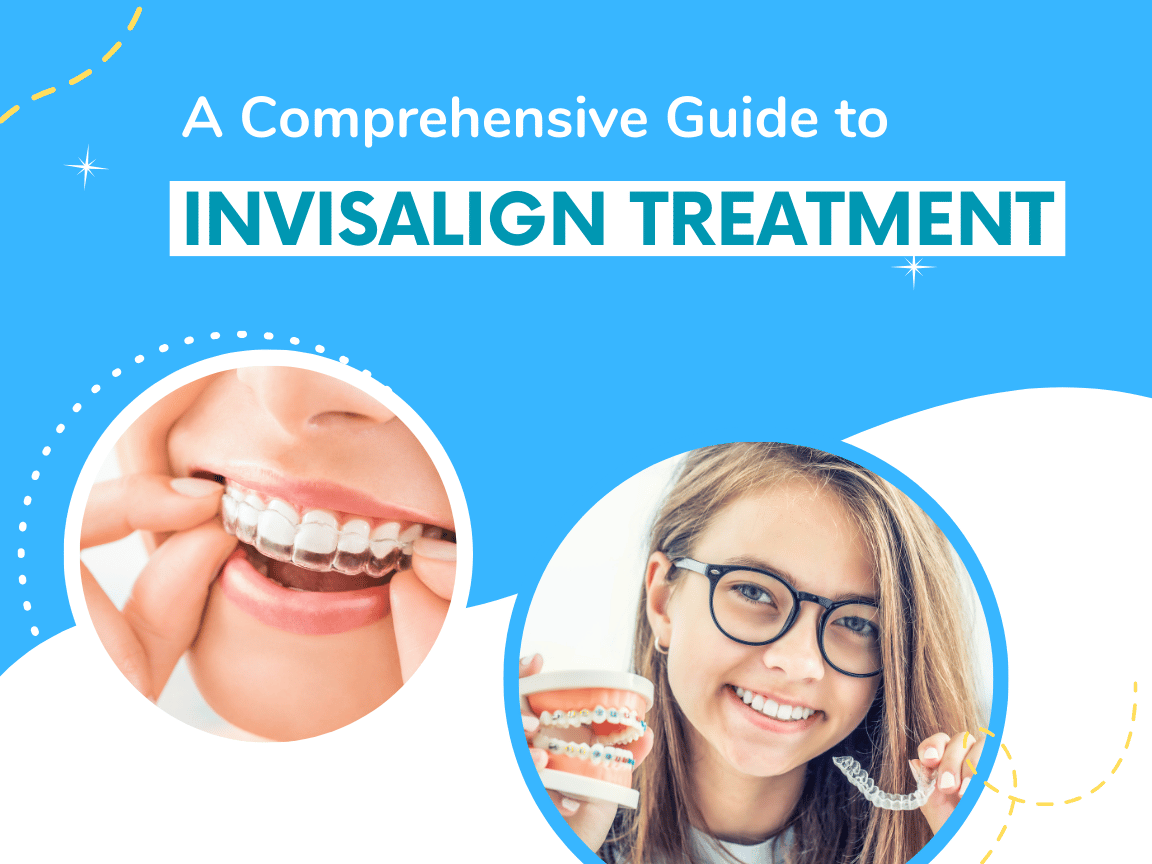Welcome to our comprehensive guide on Invisalign, the revolutionary dental treatment that is transforming smiles worldwide. If you’re considering straightening your teeth without the hassle of traditional braces, Invisalign might be the perfect solution for you. In this detailed guide, we’ll cover everything you need to know about Invisalign, from how it works to the benefits and potential challenges.
Understanding Invisalign
Introduction to Invisalign technology
Invisalign (Invisible Aligners) is a cutting-edge dental treatment that utilizes clear, removable aligners to gradually move teeth into their desired positions. These aligners are custom-made for each patient, offering a discreet and comfortable alternative to traditional braces. Unlike metal braces, Invisalign aligners are nearly invisible, allowing individuals to undergo orthodontic treatment without the aesthetic concerns associated with traditional braces.
How Invisalign differs from traditional braces
Traditional braces use metal brackets and wires to apply pressure to the teeth and reposition them over time. In contrast, Invisalign employs a series of clear plastic aligners that are worn over the teeth, gently guiding them into the desired alignment. The absence of visible brackets and wires makes Invisalign a popular choice for those seeking a more inconspicuous orthodontic solution.
The science behind clear aligners
Invisalign aligners are crafted using advanced 3D imaging technology. The process begins with a digital scan or impression of the patient’s teeth, which is used to create a virtual treatment plan. This plan maps out the precise movements of the teeth throughout the course of the treatment. Based on this plan, a series of custom aligners is produced, each designed to shift the teeth into the desired positions gradually. The use of computer-aided design (CAD) and computer-aided manufacturing (CAM) ensures the accuracy and effectiveness of the Invisalign treatment.
The Invisalign Treatment – How Does it Work?
- Initial consultation and assessment
The Invisalign journey typically begins with an initial consultation with an Invisalign specialist. During this appointment, the dentist evaluates the patient’s oral health, discusses their goals, and determines if Invisalign is a suitable option. Advanced imaging techniques, such as digital scans or X-rays, may be used to create a detailed picture of the patient’s teeth.
- Customized treatment plan
Based on the assessment, a customized treatment plan is developed. Using 3D imaging technology, the orthodontist creates a virtual representation of the entire treatment process. This digital model allows both the orthodontist and the patient to visualize the anticipated movements of the teeth and the final outcome.
- Creation of Invisalign aligners
Once the treatment plan is finalized, a series of clear aligners is custom-fabricated for the patient. These aligners are typically made from a smooth, BPA-free plastic material, ensuring a comfortable fit. Each set of aligners is worn for about two weeks, gradually moving the teeth closer to their desired positions.
- Fitting and adjustments
The patient receives the first set of aligners and is instructed on their proper use and care. Regular check-ups are scheduled to monitor progress and provide new sets of aligners. Adjustments to the treatment plan may be made as needed to ensure optimal results.
When is Invisalign an Ideal Solution?
Age considerations
Invisalign is suitable for a wide range of age groups, including teenagers and adults. While traditional braces are often recommended for children with certain orthodontic issues, Invisalign can effectively address the needs of older individuals seeking a more discreet option.
Types of dental issues best suited for Invisalign
Invisalign is a versatile dental treatment that can effectively address a wide range of dental issues. While it’s suitable for many cases, there are certain types of tooth misalignments and bite issues that are particularly well-served by Invisalign. Here are some examples:
Crowded Teeth: Invisalign is excellent for addressing crowding issues, where there is insufficient space in the jaw for all the teeth to fit properly. The clear aligners gently push the teeth into their correct positions, gradually alleviating crowding and creating a more harmonious smile.
Gaps Between Teeth: Invisalign can also close gaps between teeth, known as diastemas. The aligners are designed to exert controlled pressure on the teeth, gradually shifting them closer together and closing any spaces.
Overcrowding: When there is excessive overlap of teeth or severe crowding, Invisalign can help create more space in the dental arch by gradually moving the teeth into proper alignment. This can improve both the appearance and function of the smile.
Overbite: An overbite occurs when the upper front teeth overlap significantly with the lower front teeth. Invisalign can effectively address mild to moderate overbites by guiding the teeth into a more balanced position, reducing the excessive overlap.
Underbite: In cases where the lower teeth protrude beyond the upper teeth (underbite), Invisalign can help gradually reposition the lower teeth to achieve a more harmonious bite relationship with the upper teeth.

Crossbite: A crossbite occurs when the upper and lower teeth do not align properly when biting down. Invisalign can correct crossbites by guiding the teeth into their correct positions, ensuring a more even bite.
Open Bite: An open bite occurs when there is a gap between the upper and lower teeth when the jaws are closed. Invisalign can address mild to moderate open bites by gradually shifting the teeth into proper alignment, allowing for improved bite function and aesthetics.
Mild to Moderate Orthodontic Issues: Invisalign is suitable for individuals with mild to moderate orthodontic issues, including crooked teeth, rotated teeth, and other minor misalignments.
It’s important to note that the suitability of Invisalign depends on the specific characteristics of each case. During the initial consultation with an Invisalign professional, they will assess your dental health and discuss whether Invisalign is the right treatment option for your unique needs. In more complex cases, traditional braces or other dental treatments may be recommended for optimal results.
Assessing your oral health for Invisalign suitability
Good oral health is crucial for successful Invisalign treatment. Issues such as gum disease or untreated cavities should be addressed before starting Invisalign. Regular dental check-ups ensure that any existing dental problems are identified and treated, optimizing the overall success of Invisalign treatment.
Benefits of Invisalign Treatment
Aesthetics and discreetness
One of the primary advantages of Invisalign is its discreet nature. The clear aligners are virtually invisible, allowing individuals to undergo the treatment without feeling self-conscious about their appearance. This is particularly appealing to adults and teenagers who may be concerned about the social stigma associated with traditional braces.
Comfort and convenience
Invisalign aligners are made from a smooth, comfortable material, reducing the likelihood of irritation to the cheeks and gums. Additionally, the ability to remove the aligners for eating, drinking, and oral hygiene makes Invisalign a convenient option compared to traditional braces. The absence of dietary restrictions and the ease of maintaining oral hygiene contribute to a more comfortable overall experience.

Improved oral hygiene during treatment
Unlike traditional braces, which can make brushing and flossing more challenging, Invisalign allows for easy maintenance of oral hygiene. Since the aligners are removable, individuals can follow their regular oral care routine without any significant adjustments. This contributes to better overall oral health throughout the treatment process.
Dietary freedom
Invisalign aligners can be removed during meals, providing individuals with the freedom to eat a wide range of foods without restrictions. This eliminates the need to avoid certain types of food that could damage traditional braces or become trapped in the wires and brackets.
Potential Challenges and How to Overcome Them
Adjusting to wearing aligners
Some individuals may experience initial discomfort or difficulty speaking when they first start wearing Invisalign aligners. This is a common adjustment period, and most people adapt within a few days. Regular wear and proper care of the aligners contribute to a more comfortable experience.
Managing speech changes
The presence of aligners in the mouth can temporarily affect speech for some individuals. Practicing speaking and reading aloud during the initial days of wearing aligners can help accelerate the adjustment process. Speech changes are typically minor and resolve as the individual becomes accustomed to wearing the aligners.
Dealing with potential discomfort
As the teeth gradually move into new positions, some discomfort or pressure may be felt during the first few days of wearing a new set of aligners. This discomfort is a positive sign that the treatment is progressing. Over-the-counter pain relievers and sticking to a consistent wear schedule can help manage any discomfort.
Maintaining Oral Health During Invisalign Treatment
Cleaning and caring for your aligners
Proper care of Invisalign aligners is essential for maintaining oral hygiene and ensuring the success of the treatment. Aligners should be cleaned daily using a gentle, antibacterial soap and a soft toothbrush. Avoiding colored or scented soaps helps prevent discoloration of the aligners.
Regular dental check-ups
Throughout Invisalign treatment, regular dental check-ups are crucial. These appointments allow the dentists to monitor progress, make any necessary adjustments to the treatment plan, and address any concerns or questions the patient may have.
Addressing common concerns related to oral hygiene
Maintaining good oral hygiene habits, such as regular brushing, flossing, and using an antiseptic mouthwash, helps prevent issues such as cavities or gum disease during Invisalign treatment. Addressing any concerns promptly ensures a smooth and successful journey to a confident smile.
Life After Invisalign
Retainers and post-treatment care
Upon completing Invisalign treatment, individuals are typically required to wear retainers to prevent the teeth from shifting back to their original positions. The Invisalign specialist provides guidance on the duration and wearing schedule for retainers. Adhering to this post-treatment care is essential for maintaining the results achieved with Invisalign.
Enjoying your new smile
The completion of the Invisalign treatment marks the beginning of a confident, beautiful smile. Individuals can enjoy the aesthetic and functional benefits of their straightened teeth, experiencing improved self-esteem and oral health.
Long-term oral health benefits
In addition to the cosmetic advantages, the long-term oral health benefits of Invisalign include improved bite alignment and easier maintenance of oral hygiene. Properly aligned teeth contribute to a healthier smile and reduce the risk of issues such as tooth decay and gum disease.
Choosing the Right Invisalign Expert
Researching and selecting an experienced Invisalign provider
Selecting the right professional who specializes in Invisalign is crucial for a successful Invisalign experience. Researching providers, reading reviews, and seeking recommendations from friends or family members can help individuals identify experienced and reputable orthodontists.
R Kaur Family Dentistry Google Reviews
Questions to ask during your initial consultation
During the initial consultation, asking specific questions about the Invisalign treatment can help you make an informed decision. Here are some of the questions you can ask your Invisalign specialist during the initial consultation.
- Can you please lay out the best-suited Invisalign treatment plan for me?
- Can you please share your experience of Invisalign treatment?
- What are the common challenges I can expect during the treatment?
- What benefits can I expect after the Invisalign treatment?
- Can you share the expected timeline for the entire treatment?
- How do I best take care of the teeth & aligners during the treatment?
Understanding the importance of an experienced dental team specialized in Invisalign
In addition to the Invisalign specialist, the support of a qualified dental team is essential for a smooth Invisalign journey. The team plays a crucial role in creating and monitoring the treatment plan, providing guidance on care and maintenance, and addressing any concerns that may arise during the course of treatment.
Conclusion
Congratulations on completing our comprehensive guide to Invisalign! Armed with this knowledge, you’re well-equipped to make informed decisions about your Invisalign journey. Whether you’re considering Invisalign for yourself or a family member, the path to a straighter, healthier smile starts with a consultation with a qualified Invisalign specialist.
Reach out to us for a free consultation if you are thinking about Invisalign for you or your family members.

